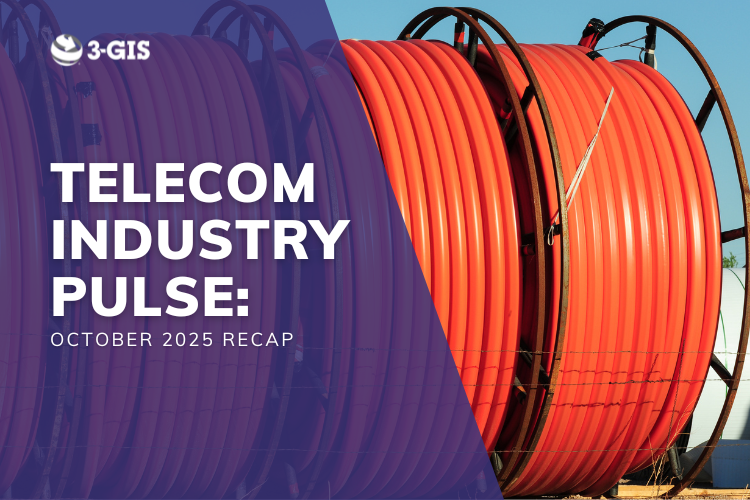What is expected
5G is the highly anticipated next generation of wireless service that will blow the doors off 4G in terms of bandwidth, data capacity and latency. It must be fiber first before 5G. Because of the nature of 5G, the difference in propagation of the networks that will be built on that 5G standard means that having a low and tight design for the array of cell sites, small cells, DAS, as well as FTTH is resulting in new and denser fiber plants as the foundation for supporting the architecture of the next-generation networks.
Telecom is implementing automation everywhere to increase the speed of network deployment and simplify operations. Managing the complexity of the fiber plant is challenging when the faster network construction is needed, architectures varied, service levels more stringent, and asset visibility critical for NFV/SDN environments.
The impact of 5G will go well beyond a more powerful smartphone. The World Economic Forum believes 5G will be as revolutionary as electricity or the automobile. The high data capacity and low latency of 5G will make smart cities, virtual reality, surgeries performed remotely and self-driving cars a reality, someday. Estimates put the data usage for a fully automated car at 4,000GB for an hour of driving. To deliver data of that magnitude to customers, service providers need to take on major fiber deployments to build networks that can handle the load.
How 5G will be delivered
Fiber will be the backbone of the networks that support 5G. The majority of your data consumption may take place on a wireless device, but wireline broadband access supports up to 90% of all internet traffic. 5G is expected to use a millimeter wave band which can carry a higher bandwidth, but that comes at the cost of a limited range of 1/10 to 1/15 of that of 4G LTE. The shorter range requires 5G macro and small cells to be closer together, so they will need to be installed in large numbers. The macro and small cells need to be connected to a fiber wired network.
Another issue with the 5G network is millimeter wave signals cannot penetrate exterior walls, making fiber to the home build outs even more important as the number of internet-connected devices in the average home increases. Fiber will also have to be run to the edges of networks to make smart cities a reality. Devices ranging from street lights, security cameras, parking meters and trash cans will have connectivity in smart cities. By the year 2020, there is expected to be between 20 and 30 billion internet connected devices worldwide. Mobile data use will increase seven-fold from 2016 to 2021 according to a Cisco projection1. The increasing demand for data and the need for a large number of macro and small cells poses the question: how much fiber will be necessary to support 5G and meet increasing data demands?
The work to be done
In a white paper released by the Fiber Broadband Association (FBA)2, the organization estimated it will require nearly 1.4 million miles of fiber cable to connect the cells needed to provide full 5G service to 25 metro areas with a population of approximately 135 million people. (Click to read more about the math of 5G.)
Signs that companies realize they need more fiber are evident. Some companies are choosing to increase their fiber footprint through acquisitions. CenturyLink completed its purchase of Level 3 for $34 billion in 2017, gaining CenturyLink 200,00 route miles of fiber across the globe3. Crown Castle purchased three fiber providers: FiberNet, Wilcon and Lightower. Crown Castle now owns approximately 60,000 miles of fiber routing in the U.S.4 Smaller scale fiber deployments are happening across the U.S., from large markets like northern Virginia to rural areas like Grant County, Washington. Large scale efforts are also taking place. Verizon5 reached a $1.05 billion deal with Corning to buy up to 12.4 million miles of optical fiber every year from 2018 to 20206. In Germany Deutsche Telekom installed more than 40,000 km of fiber cable in 20177. According to the FBA, new FTTH deployments passed 4.4 million homes in America between September 2016 and September 2017, a record for a one-year period. Despite that only approximately 30% of homes in the U.S. had FTTH access as of September 2017. The number of homes in European Union countries with FTTH access is also at 30%. FTTH service is available for 37% of homes in Canada and 19% in Mexico8.
Consumer excitement and expectations for the advancements 5G will bring to our daily lives are high. Reality is the fiber networks currently in the ground cannot deliver the anticipated results of 5G the market expects. For service providers to carry the services required for 5G economic success, they need to get more fiber in the ground first.
- https://www.cisco.com/c/en/us/solutions/collateral/service-provider/visual-networking-index-vni/mobile-white-paper-c11-520862.html
- https://www.fiberbroadband.org/blog/fiber-broadband-association-releases-white-paper-on-fiber-and-5g
- https://arstechnica.com/information-technology/2016/10/centurylink-to-buy-level-3-get-another-200000-miles-of-fiber/
- https://www.fiercetelecom.com/telecom/crown-castle-s-brown-owning-fiber-fundamental-to-delivering-small-cell-solutions
- https://www.verizon.com/info/definitions/fiber-optics/
- https://www.corning.com/worldwide/en/about-us/news-events/news-releases/2017/04/verizon-agrees-to-1-point-05-billion-dollar-three-year-minimum-purchase-agreement-with-corning-for-next-generation-optical-solutions.html
- https://www.telekom.com/en/media/media-information/archive/record-year-for-fiber-optic-expansion-511492
- http://www.lightwaveonline.com/articles/2017/12/u-s-ftth-deployments-set-record-fiber-broadband-association.html



